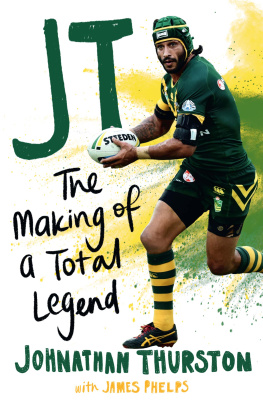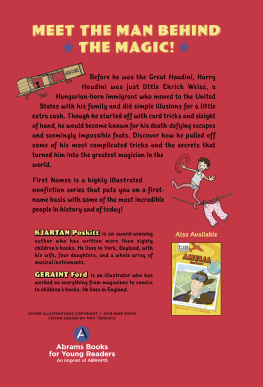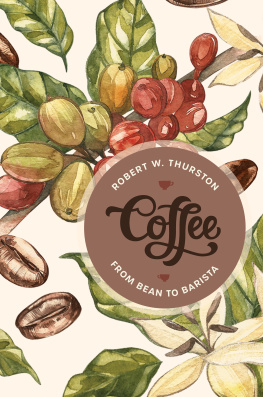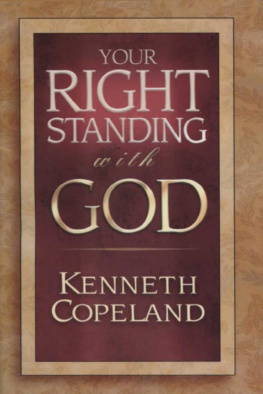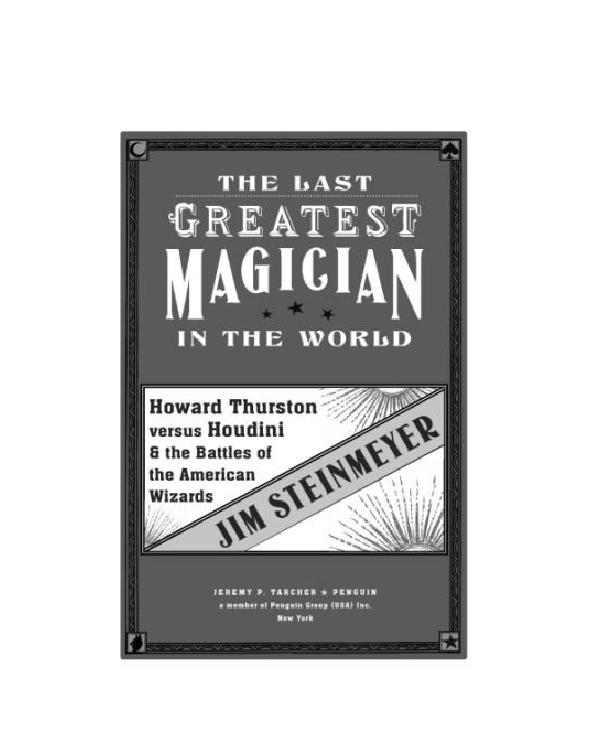Table of Contents
JEREMY P. TARCHER/PENGUIN
Published by the Penguin Group
Penguin Group (USA) Inc., 375 Hudson Street, New York, New York 10014, USA Penguin Group (Canada),
90 Eglinton Avenue East, Suite 700, Toronto, Ontario M4P 2Y3, Canada (a division of Pearson
Penguin Canada Inc.) Penguin Books Ltd, 80 Strand, London W C2R oRL, England Penguin Ireland,
25 St Stephens Green, Dublin 2, Ireland (a division of Penguin Books Ltd) Penguin Group (Australia),
250 Camberwell Road, Camberwell, Victoria 3124, Australia (a division of Pearson Australia Group Pty Ltd)
Penguin Books India Pvt Ltd, 11 Community Centre, Panchsheel Park, New Delhi-110 017, India Penguin Group (NZ),
67 Apollo Drive, Rosedale, North Shore 0632, New Zealand (a division of Pearson New Zealand Ltd)
Penguin Books (South Africa) (Pty) Ltd, 24 Sturdee Avenue, Rosebank, Johannesburg 2196, South Africa
Penguin Books Ltd, Registered Offices: 80 Strand, London WC2R oRL, England
Copyright 2011 by Jim Steinmeyer
All rights reserved. No part of this book may be reproduced, scanned, or distributed in any printed or electronic form without permission. Please do not participate in or encourage piracy of copyrighted materials in violation of the authors rights. Purchase only authorized editions. Published simultaneously in Canada
Most Tarcher/Penguin books are available at special quantity discounts for bulk purchase for sales promotions, premiums, fund-raising, and educational needs. Special books or book excerpts also can be created to fit specific needs. For details, write Penguin Group (USA) Inc. Special Markets, 375 Hudson Street, New York, NY 10014.
Library of Congress Cataloging-in-Publication Data
Steinmeyer, Jim.
The last greatest magician in the world :
Howard Thurston versus Houdini & the battles of the American wizards / Jim Steinmeyer.
p. cm.
eISBN : 978-1-101-48634-4
1. Thurston, Howard, 1869-1936. 2. Houdini, Harry, 1874-1926. 3. MagiciansUnited StatesBiography.
4. MagicUnited StatesHistory. I. Title.
GV1545.T5S
793.80922dc22
[B]
While the author has made every effort to provide accurate telephone numbers and Internet addresses at the time of publication, neither the publisher nor the author assumes any responsibility for errors, or for changes that occur after publication. Further, the publisher does not have any control over and does not assume any responsibility for author or third-party websites or their content.
http://us.penguingroup.com
INTRODUCTION
I WOULDNT DECEIVE YOU ...
Every work of art is a mystery. Thats the difference between a crudely painted portraitwhich is too honest and functional to intrigue usand the Mona Lisa, which gives and conceals at the same time. The mystery provides a peculiar and distinctive thrill. We return to puzzle over the subject, her sanguine features, or the astonishing techniques used by the artist to so perfectly capture a brief moment of changing expression. We concoct stories to explain this layered puzzle. It initially attracts on an emotional level, and then continually challenges on an intellectual level.
Every performance is a magic show. The audience trusts the magiciandepending on the performance, they might use the term actor, comedian, or playwrightwho uses equal doses of deception and honesty to lure us through a transparent fantasy, and then engage us, bemuse us by the unexpected plausibility of it all, and ultimately delight us with a genuine surprise. If a magic show today seems old-fashioned or unnecessary, thats because so many of its essential elements have been purloined by other forms of entertainment. The wires, trapdoors, and artful exaggerations, which were once the specialty of magicians like Howard Thurston, the subject of this book, have been integrated into much of our storytelling.
I suppose this is a shame, for a good magic show, experienced in person, is uniquely, elementally entertaining. It encapsulates the experience of wonder and exploits our need for unadulterated fantasy. Modern audiences like to tell themselves that fashions have changed, or that unadorned marvelsmagic for magics sakeare out-of-date or unsophisticated. Yet audiences have developed a taste for songs that further a story (a Broadway musical), as well as songs that are presented for their own sake (a performer in concert).
It is the publics fickleness with their magicians that has left Howard Thurston all but forgotten today. His story is one of the most remarkable in show business. During his life, from 1869 to 1936, he successfully navigated the most dramatic changes in entertainmentfrom street performances to sideshows to wagon tours through Americas western territories. He became one of the worlds most renowned vaudeville stars, boldly performing an act with just a handful of playing cards, and then had the sense to leave vaudeville, expanding his show into an extravaganza with over forty tons of apparatus and costumes. His touring production was an American institution for nearly thirty years, and Thurston earned a brand name equal to Barnum, Ziegfeld, George M. Cohan, and Ringling Brothers.
Most remarkably, Howard Thurston was Houdinis chief rival during the first decades of the 1900s, and Thurston won. He won with a bigger show, a more successful reputation, and the title of Americas greatest magician. Today Houdini may have earned legendary status for his daredevil feats. But Howard Thurston was the publics favorite. After generations of greats, theres no question that Thurston was the last, greatest magician in the world. His ultimate struggle was with an economic depression and competition from Hollywood films, a very different kind of magic. Thats when everything changed. After Hollywood, there was no longer any need for the great magicians of the past.
For anyone who has ever watched a magic show and dared to ask How is it done? I hope that Im able to provide a few answers. In return, Howard Thurston presents an intriguing mystery to the reader: Why was it done?
INVARIABLY, at the start of the twenty-first century we perceive a magic show as old-fashioned because we imagine the common clich of such a performance, evoking the dusty traditions of vaudeville, the bright footlights, and the rat-a-tat style of one indistinguishable performer after another. We might imagine these vaudeville magicians as they often appear in comic books, anonymous miracle workers flapping a cape and attempting to impress us by sheer force of their deceptions.
Of course, it was never really like this. By todays standardstelevision standardsvaudeville performers were given extravagant amounts of time onstage, between ten and twenty minutes for an individual act. They chatted to the audience and were highly valued for their personalities. If Thurston were to perform today, I can say with some experience that his show would be every bit as marvelous to a modern audience. We might recognize changes of fashionthe pace of Thurstons scripted patter, or the designs of his costumes or scenerybut there was nothing about the nature of his magic that would seem outdated or obsolete. The magic would still be miraculous because, like any talented magician, Thurston selected illusions that did not rely on the latest bits of technology, but on universal, fairy-tale themes: causing a person to float in the air, contacting the spirits, appearance, disappearance, destruction and restoration.


